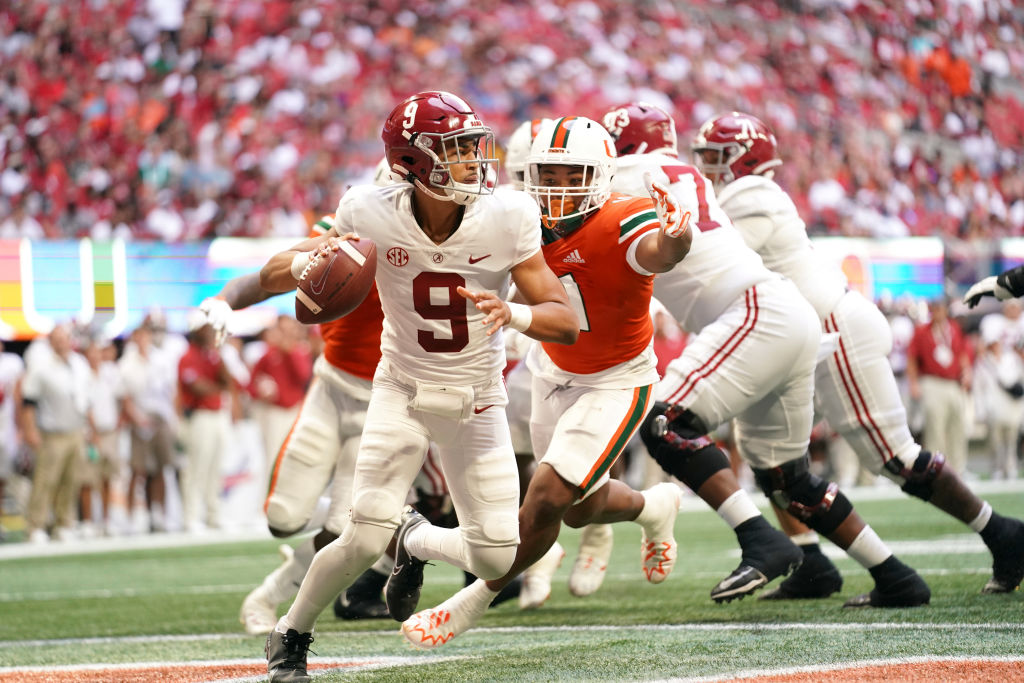College Games represent a vibrant tapestry woven from athletic competition, fervent fandom, and the complex interplay of academics and athletic pursuits. This exploration delves into the diverse world of collegiate sports, examining everything from the adrenaline-pumping action on the field to the significant financial and social implications for universities and student-athletes alike. We’ll uncover the unique traditions, marketing strategies, and media landscapes that shape the experience of both players and spectators.
From the roar of the crowd at a football game to the strategic maneuvers on a basketball court, college sports offer a microcosm of American culture. This analysis will dissect the various types of college games, comparing their rules, histories, and the unique challenges faced by student-athletes striving for excellence in both academics and athletics. The impact of these games on campus life, the financial aspects of college athletic programs, and the ethical considerations surrounding media coverage will also be examined.
Types of College Games
College athletics encompass a wide variety of sports, offering diverse competitive opportunities for student-athletes. These competitions range from individual pursuits requiring intense focus and skill to team-based events demanding strategic collaboration and synchronized effort. The level of competition is often fierce, reflecting the dedication and ambition of both the athletes and their institutions.
Popular College Sports: Individual and Team Competitions
Popular team sports include basketball, football, baseball, soccer, and volleyball, each demanding unique skill sets and strategic approaches. Individual sports, such as track and field, swimming, and golf, focus on individual performance and personal best achievements. The competitive spirit is equally intense in both categories, showcasing a broad spectrum of athletic talent.
Comparing College Sports: Rules and Gameplay
Three prominent college sports—basketball, football, and soccer—demonstrate significant differences in rules and gameplay. Basketball relies on quick reflexes, ball-handling skills, and strategic teamwork within a confined court. Football involves a complex interplay of physical strength, strategic formations, and precise execution of plays on a large field. Soccer emphasizes agility, endurance, and strategic positioning across a vast field, with a focus on ball control and goal scoring.
Evolution of College Football
College football has undergone a significant evolution since its origins in the late 19th century. Initially characterized by rudimentary rules and a high degree of physical violence, the sport gradually incorporated safety regulations, standardized rules, and increasingly sophisticated strategic approaches. The rise of collegiate athletic conferences and the establishment of national championship games have further shaped its structure and popularity.
College Game Culture and Fan Experience
The atmosphere surrounding college game days is a vibrant blend of tradition, excitement, and community spirit. Universities create unique game-day experiences that foster a strong sense of belonging and school pride among students, alumni, and the wider community.
Unique Fan Rituals and Chants
Many college sports teams have developed distinctive fan rituals and chants, often passed down through generations of supporters. These traditions contribute significantly to the unique atmosphere of each game and strengthen the sense of community among fans. For example, the “Wave” at a baseball game or the specific chants associated with basketball games create an electric atmosphere.
Impact of College Game Culture on Campus and Community
College game culture extends far beyond the stadium, impacting campus life and community engagement. Game days often serve as social hubs, uniting students, faculty, and local residents in a shared experience of school spirit and pride. The economic impact of games on the surrounding community through increased spending is also substantial.
Hypothetical Marketing Campaign for Enhanced Fan Experience

Source: cloudfront.net
A hypothetical marketing campaign could focus on enhancing the fan experience by incorporating interactive elements, such as augmented reality experiences or social media contests. Improved concessions, enhanced stadium amenities, and targeted promotions could further increase fan engagement and loyalty.
College Games are seeing a surge in popularity, with students increasingly using mobile apps to connect and organize events. This trend is amplified by apps offering unique features, such as the recently released Aaad Apk , which provides advanced scheduling and communication tools. The accessibility of such apps is changing how college sporting events are planned and promoted, ultimately boosting participation.
The Role of College Athletics in Higher Education

Source: time.com
College athletics plays a significant, multifaceted role within higher education institutions, impacting finances, academics, and student life. The financial implications are substantial, with successful programs generating significant revenue, while others may require considerable financial investment.
Financial Implications of College Sports Programs, College Games
The financial impact of college sports programs varies widely depending on the sport’s popularity, success, and the university’s investment strategy. Successful programs can generate substantial revenue through ticket sales, media rights, and merchandise, while others may operate at a deficit, requiring significant institutional funding.
Academic Requirements and Support for Student-Athletes
Universities provide academic support systems tailored to the needs of student-athletes, recognizing the demanding nature of balancing academic studies and athletic training. These support systems often include academic advising, tutoring services, and flexible scheduling options to help student-athletes succeed in their studies.
Recruiting Processes Across Different Sports
Recruiting processes vary significantly across different college sports, reflecting the unique demands and skill sets required. High-profile sports often involve extensive scouting networks, national competitions, and intense competition for top talent, while less prominent sports may rely on regional recruiting and personal connections.
Scholarship Opportunities Across Three Sports
Scholarship opportunities vary considerably across different sports, reflecting factors such as the sport’s popularity, revenue generation, and the number of athletes required. The following table provides a general comparison, recognizing that actual scholarship amounts and availability can fluctuate significantly between institutions and years.
| Sport | Full Scholarships Available | Partial Scholarships Available | Average Scholarship Value |
|---|---|---|---|
| Men’s Basketball | Yes | Yes | Varies widely |
| Football | Yes | Yes | Varies widely |
| Women’s Soccer | Yes | Yes | Varies widely |
Impact of College Games on Student Athletes
Participating in college athletics presents unique challenges and rewards for student-athletes. The physical and mental demands are substantial, requiring dedication, discipline, and a commitment to balancing academics with rigorous training schedules.
Physical and Mental Demands on Student-Athletes
Student-athletes face intense physical demands, including regular training, competitions, and potential risk of injuries. The mental demands are equally significant, requiring focus, discipline, and resilience in the face of competition, pressure, and potential setbacks.
Balancing Academics and Athletic Training
Strategies for balancing academics and athletic training include effective time management, prioritizing tasks, seeking academic support services, and maintaining open communication with coaches and professors. Building a strong support network is crucial for navigating the demands of both academic and athletic pursuits.
Long-Term Career Prospects for Student-Athletes
Long-term career prospects for student-athletes vary considerably depending on their athletic achievements, academic background, and career aspirations. Many athletes pursue careers related to their sport, while others leverage their athletic experiences to develop skills applicable to diverse fields.
Challenges and Rewards of Being a College Athlete
- Challenges: Intense training schedules, time constraints, pressure to perform, risk of injury, balancing academics and athletics, potential for burnout.
- Rewards: Personal growth, skill development, teamwork experience, leadership opportunities, scholarships, potential for professional sports careers, strong network of peers and mentors, enhanced self-discipline and time-management skills.
College Game Media Coverage and Marketing
Media coverage and marketing play a crucial role in promoting college sporting events and engaging fans. Television broadcasts, digital media platforms, and social media all contribute to the visibility and popularity of college athletics.
Role of Television and Digital Media
Television broadcasts provide extensive coverage of major college sporting events, reaching a wide audience and generating significant revenue. Digital media platforms, including websites, streaming services, and mobile apps, offer alternative avenues for accessing game information, highlights, and behind-the-scenes content.
Successful Marketing Campaigns
Successful marketing campaigns often leverage emotional appeals, highlighting the traditions, rivalries, and community aspects of college sports. Targeted advertising, social media engagement, and partnerships with sponsors contribute to the success of these campaigns.
Ethical Considerations in College Sports Media Coverage
Ethical considerations in college sports media coverage include maintaining objectivity, avoiding sensationalism, and respecting the privacy and well-being of student-athletes. Responsible reporting is crucial for maintaining the integrity of college athletics.
Social Media Engagement and Promotion
Social media platforms are increasingly used to engage fans, promote college games, and build community around college athletic programs. Live updates, interactive content, and behind-the-scenes access enhance fan engagement and broaden the reach of college sports.
Visual Representation of a College Game: College Games
The visual elements of college games contribute significantly to the overall atmosphere and fan experience. From the uniforms and field to the crowd’s energy, these visual aspects create a unique and memorable spectacle.
Visual Elements of a College Football Game
A college football game is a vibrant spectacle. Teams sport distinctive uniforms, often with bold colors and unique designs. The expansive field, marked with clear lines and end zones, provides a dynamic setting for the game’s action. The crowd, often numbering in the tens of thousands, creates a sea of color and sound, adding to the overall excitement.
Visual Elements of a College Basketball Game
College basketball games are characterized by fast-paced action on a polished hardwood court, marked with clear lines and a center circle. Players’ movements are fluid and dynamic, showcasing athleticism and skill. The arena atmosphere, often filled with enthusiastic fans, creates an electrifying environment.
Visual Elements of a College Soccer Game
College soccer games take place on a lush green field, providing a visually appealing backdrop for the game. Players’ movements are characterized by agility, speed, and strategic positioning. The overall aesthetic is one of athletic grace and precision, enhanced by the energy of the crowd.
Ending Remarks
The world of College Games is far more intricate than simply the games themselves. It’s a complex ecosystem where athletic prowess intertwines with academic rigor, where passionate fans create electrifying atmospheres, and where significant financial investments and ethical considerations are constantly at play. Understanding this multifaceted landscape provides valuable insight into the role of college athletics in higher education and the lasting impact it has on student-athletes’ lives and careers.
